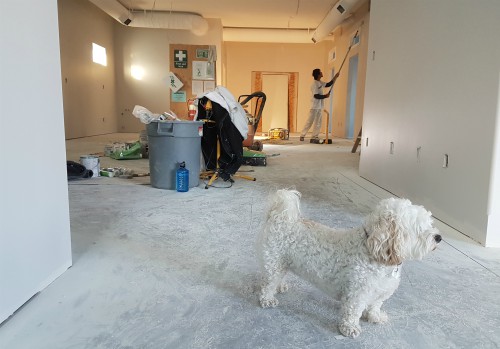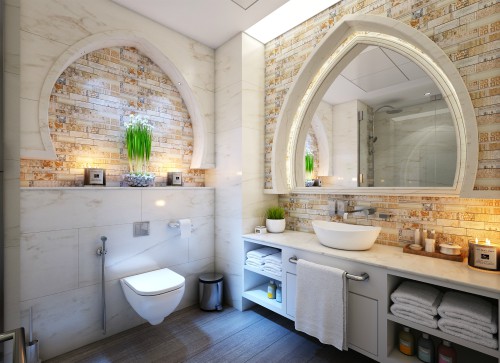What’s your biggest fear about home improvement?
For many people, it’s unknowns that prevent them from taking action or losing sleep once they do. Feeling like you’re working in the dark can slow decision-making.
And, when you boil it down, home improvement projects are nothing more than a series of tiny and massive decisions. You’re not alone if that thought leaves you anxious.
But it doesn’t have to be that way. With these tips for managing your home improvement project, you can reduce uncertainty, gain confidence, and, in many cases, save money.
So, let’s get to it!
Basic Tools
The biggest mistake you can make when managing your home improvement project is keeping everything in your head.
Even relatively small projects like upgrading plumbing fixtures or can be complex. And large projects like remodeling attics and finishing basements? They can involve hundreds of decisions.
The less you have to remember, the easier it is to make sound decisions and foresee issues. You need to think about details but don’t only store them in your head. Stress is a natural part of home improvement but it doesn’t have to overwhelm you.
At the planning stage of your project get:
- Paper notebook or binder with loose leaf pages
- Pen and/or pencil
- Pocket folder or expandable file holder
- Calculator
- Camera
- Tape measure spreadsheet (optional)

With a paper notebook, technology doesn’t limit the way you can put notes on a page. It’s easy to mix words with doodles, which can be great when trying to communicate an idea to tradespeople. Plus, there’s evidence that writing by hand improves memory and gives you a greater perspective when re-reading.
Of course, the paper calls for a pen and/or pencil. Consider using different colors to highlight priorities and improve readability later on.
A pocket folder or expandable file holder is essential for keeping swatches, paint chips, product brochures, business cards, clippings of design ideas, etc. in one place.
Thanks to smartphones, most of us have a calculator and a camera with us at all times so that’s an easy item to check off the list.
Measure twice, cut once is an adage that never goes out of style. Always have a tape measure at hand, even if others are doing the work. It allows you to quickly “test” spatial ideas and settles disputes about placement or fit.
No need to be an Excel guru to include a spreadsheet in your management toolbox. Windows users can find a variety of reliable timeline templates here and budget templates here.)
Time
Faster isn’t always better. Yet, time is a non-renewable resource so we have to use it wisely.
When managing your home improvement project, be realistic about time. Set deadlines that are achievable even if they’re aggressive.
If a deadline involves anyone else, share it with them before setting wheels in motion. (This includes family members who have to live around an improvement project.) Listen and address concerns. Make that a habit and everyone’s time will be used in the most effective way.
If you’re paying trades by the hour, monitor their time. Check the status of work at set milestones. For example, when 50% of the budget is spent and again at 75%.
This time management habit gives you data to foster discussions with trades. It’s also an objective way to identify risks to scope or budget. As a result, decisions to modify scope or budget become less difficult.
Scope
The “scope” is the project management term for “what you’re agreeing will be done”. The more specific the scope, the better. Even for DIY home improvement projects.
If getting into details makes you want to run in the other direction, try this method for defining scope.
On a sheet of paper, write down everything you want the project to achieve. Let’s say you’re redoing a master bathroom. Your list might include:
- Natural light
- Warm floors
- Enough storage for all your towels
- Easy to clean
- Feel luxurious
The goal is to create a picture of the finished project without specific details like materials and decor. That comes later.
On another piece of paper, draw a line down the middle. Label one column “Necessary” and the other “Options”. If you’re using a designer, contractor, or project manager, they must be at the table for this step.
Refer to the first sheet of paper. In the “Necessary” column, list everything required to achieve your vision. For example, to get natural light in your bathroom you need an opening to the outside. Under “Options” you would write window, skylight, and sky tunnel.
Do this exercise for each point in your vision.
When done, read through the options and circle the ones that make sense in the context of the whole list. It’s okay if you circle more than one option per necessity.
Those circled options become the basis for getting specific about cost, availability, and complexity. One option at a time. For DIYers, this makes getting a handle on total cost and timeline (based on materials and labor availability) less overwhelming. For contractors and project managers, the list saves time and eliminates guesswork. Quotes are more accurate.
Budget
Money is often the biggest concern when managing home improvement projects.
To prevent high stress, set your budget in one of two ways:
- Assess your savings and how much debt (if any) you can handle to determine how much you can spend. That’s your number. Write it down and keep it front and center as you work on a DIY project. If you have a contractor, tell them the amount that’s 90% of your number. Cushions are good to have.
- Determine the cost of your ideal outcome. If it’s beyond your means, start paring down the scope, which includes materials chosen. Repeat until you reach a dollar figure that will you allow to sleep at night.
For most people, the second way works better in the long run. When you see the price tag of the ideal, you’re better at finding acceptable compromises as are less likely to succumb to scope creep.
Decisions and Managing Your Home Improvement Project
As we said off the top, managing your home improvement project is really about making decisions. Good decisions. Decisions that help you achieve your goal.
But what if you’re not great at making decisions? Or you’re tired of making decisions?
Do these things to reduce stress and keep the project moving in the right direction:
- If stuck, weigh the value of a particular decision against the value of the entire project. Some decisions aren’t worth stressing over.
- Know the difference between good enough and poor quality. Only take corrective action to protect against poor quality unless you have unlimited time and money.
- Trust your gut. Too much analysis can cause paralysis.
- Delegate. Let trusted parties make decisions about things outside your interests or knowledge.
- Limit information. There is such a thing as too much research.
Finally, remember most decisions aren’t critical. They only feel that way. But with practice, you’ll figure out what worth sweating over.
And, if new flooring is part of your home improvement project, our expert team can help you discover the benefits of bamboo and eucalyptus flooring!

About the Author
Jen is your go-to guru for crafting a cozy, green cocoon. 🪴 Her dive into sustainable building wasn’t just about saving the planet—it started as a mission to make family movie nights eco-friendly (and to ensure the popcorn was the only thing getting heated!). With a knack for breaking down the jargon, Jen turns eco-lingo into everyday language. Swing by the Green Living blog for a mix of earth-loving advice and home improvement hacks. Whether you’re just dipping your toes into green waters or you’ve been swimming in the deep end of DIY projects, Jen’s here to guide, giggle, and remind you that every eco-choice is a step towards a planet that thanks you… and maybe even sends a rainbow your way! 🌈




